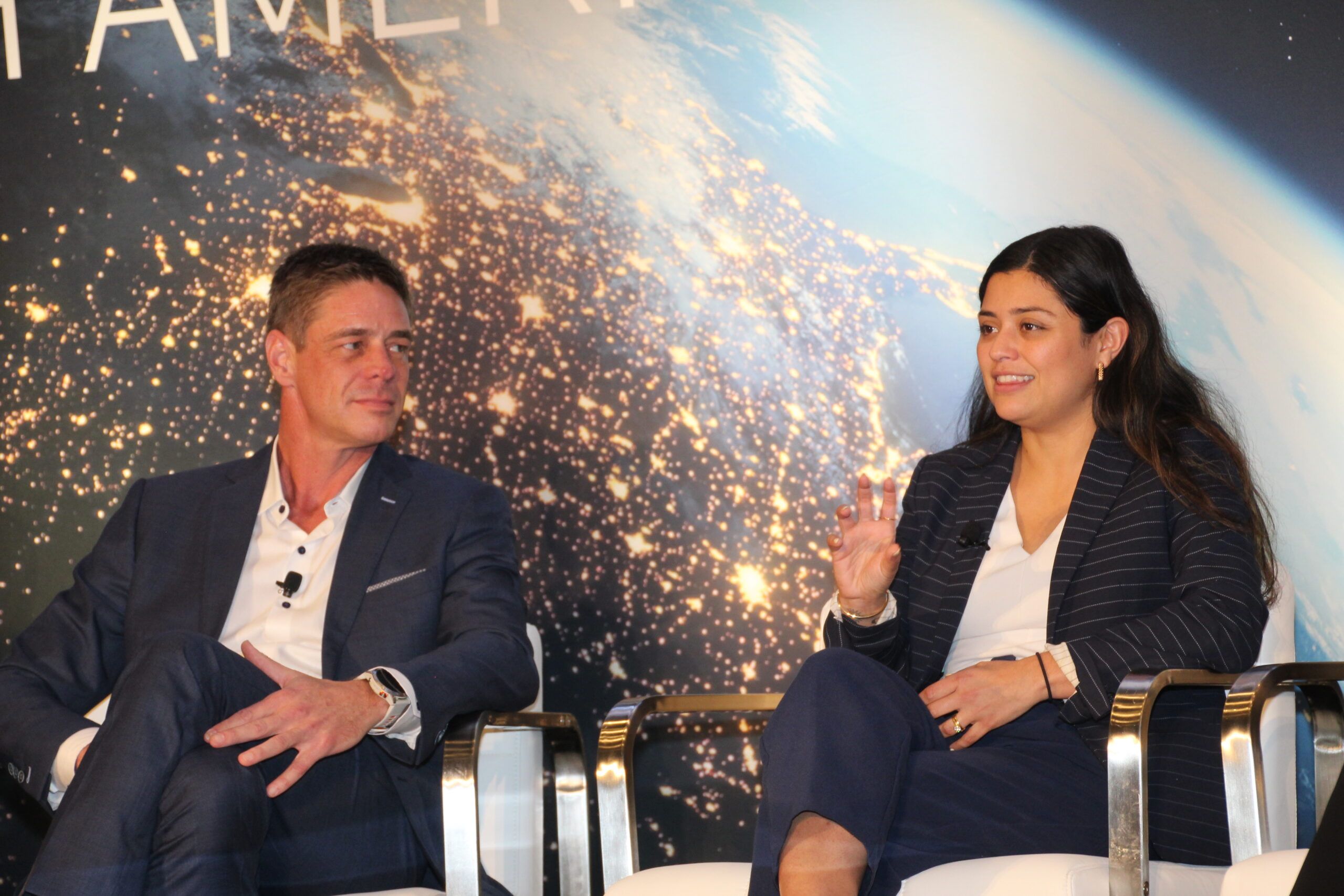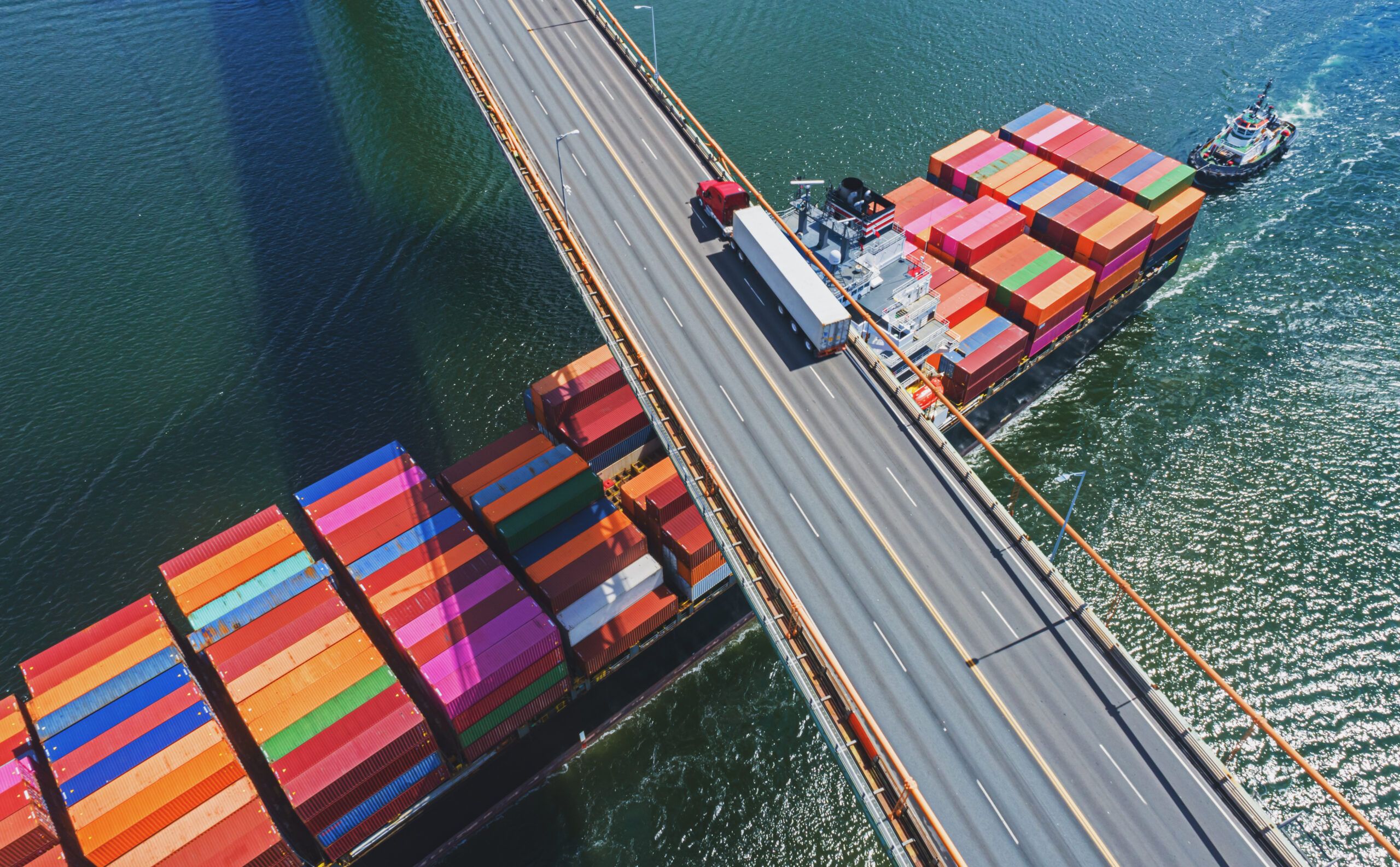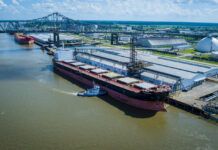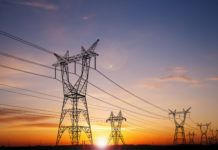It’s a frequently ignored, but critically important, piece of the carbon neutrality puzzle.
As industrial owners aggressively pursue their own internal environmental goals, the emissions from shipping, trucking, rail, air and pipeline are often overlooked or not accurately gauged as part of the process.
That’s significant, as the supply chain produces an estimated 60% of emissions in the U.S., says Stuart Page, a senior consultant in the U.S. Department of Energy’s Loan Programs Office in Houston.
“It’s a big chunk of where our emissions come from, which means there’s real opportunity there,” says Page, who moderated a panel at the recent Energy Transition Conference in Houston, sponsored by Reuters Events. “But when looking at the top 2,000 companies in the world, only about one-third of them have credible, science-based net-zero 2050 targets.”

ZACH SCOTT, head of U.S. carbon for global oil and gas shipper Trafigura, speaking with Laura Zapata at the Energy Transition Conference in Houston (Sam Barnes)
And of those, he adds, only 10% are tracking “Scope 3” emissions – those that result from the moving of assets not owned or controlled by the reporting organization.
Zach Scott, head of U.S. Carbon for global oil and gas shipper Trafigura in Houston, says his office focuses exclusively on decarbonizing processes in the supply chain.
“We believe that until companies comprehensively understand their carbon footprints, then the problem isn’t going to be solved,” says Scott, also speaking at the Energy Transition Conference.
It will ultimately require a significant amount of collaboration at every stage of the process, but “that just isn’t happening in the energy value chain,” he says.
In 2022, Trafigura partnered with Palantir Technologies to launch Agora, a secure, independent platform delivering enhanced visibility, reporting and analysis of commodity supply chain carbon intensity. The platform combines Trafigura’s knowledge of commodity markets, including data on shipments and trade routes, with Palantir’s software for data-driven operations and decision-making.
The resulting tool brings greater transparency to the carbon intensity of commodity supply chains. In turn, this helps companies understand how existing trade flows and routes can be decarbonized to hit emissions reduction targets faster. It also allows for collaboration across supply chains, benchmarking, analysis of alternative scenarios for carbon intensity reductions and carbon price impact modeling. Users’ primary data can be supplemented with industry data to map new simulations and pathways.
Scott says companies can make better-informed decisions when equipped with accurate data. “That’s why we rolled out the tool,” he adds. “If you can’t measure it, you can’t manage it.”
It Can Be Less Costly, Too
Dom Peré, chief executive officer of Baton Rouge-based logistics company Marex Services Group LLC, says owners should embrace carbon-reducing strategies in their supply chains, since they often go hand in hand with a significant savings in cost and time.
Unfortunately, many companies don’t see the need for a logistics strategy and instead lean on familiar, and often inefficient, ways to schedule shipments. Peré says Marex uses technology to look for efficiencies throughout every stage of the logistical process. Founded in 2011, the company provides freight management, transportation consulting, and a range of domestic and cross border logistics services.
“Logistics can comprise up to 10 to 30 percent of a project’s budget,” he adds. “Everything should be planned out up front. If you can move to a more digital, automated, tech-centered platform where you’re centralizing everything, you can optimize your processes. And when you’re able to optimize – by maximizing the space on that flatbed truck or ship or optimizing a route – that can have a pretty big impact on carbon.
“For example, by keeping a truck’s wheels turning in an efficient manner, a driver won’t have to ‘deadhead’ from Baton Rouge to Shreveport to grab a load before going back to Houston. They can grab something within a three-to-five-mile radius. All of that reduces the overall impact to the environment … and your business. That’s what we do as a transportation management firm.”
In recent years, “nearshoring” the manufacture of materials has also become an increasingly popular way to improve supply chain efficiency. McKinsey & Company’s annual survey of supply chain leaders revealed that the share of companies making moves to nearshore their production was expected to nearly triple in 2023, primarily the result of the supply chain disruptions during and following the pandemic.
Nearshoring comes with other benefits, not the least of which is a reduction in supply chain emissions, says Laura Zapata, co-founder and CEO of Clearloop in Nashville. Clearloop provides carbon solutions for a variety of organizations, as well as invests in solar projects across the U.S. to expand access to clean energy.
“Nearshoring also creates more domestic jobs and reduces supply chain expenses,” Zapata says.

The company nearshores its supply chain when possible, and recently entered into a supply agreement with First Solar to provide solar panels from its New Iberia manufacturing facility currently under construction. The $1.1 billion plant is expected to be operational in 2026. Clearloop also plans to use U.S.-made steel for the steel tubing in the solar panel mounting systems.
By localizing the supply chain, Clearloop hopes to cut emissions while also increasing the security of their supply chain. “We’re lowering the carbon intensity of building the modules,” Zapata says. “And as more of that happens, we’re creating job skills that will help grow that part of the economy.”
A Warning from the Banks
Some banks are outright declining to finance projects that they expect will increase carbon levels, or that fail to account for their supply chain emissions.
Ravina Advani, head of the Low Carbon Transition Group Americas for BNP Paribas in New York, says her international bank is pairing back on investments in certain carbon emitting industries such as coal and conventional oil and gas, while doubling down on evolving and clean technologies.
BNP Paribas is one of the founding members of the Net-
Zero Banking Alliance, consisting of more than 100 financial institutions who banded together to measure the carbon footprint of their portfolios, with an eye on achieving net-zero by 2050.
“We’re looking at the carbon emissions from every single loan that we lend,” Advani says, speaking during the Energy Transition Conference. “Any time we expect that a natural gas fired plant or pipeline project will create an uptick in carbon emissions, we’re saying ‘no’ to those deals. We have targets goals of our own and we want to ensure that we get there by mid-century.”
“If there’s a decarbonization angle for us we will certainly look to support that client with their decarbonations plans, but if it’s a cement plant, for example, that isn’t looking to decarbonize in any way we’ll have a harder time supporting that.”









